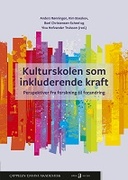Explore

Kulturskolen som inkluderende kraft
Kim Boeskov (editor), Irene Kinunda Afriyie, Sofia Cedervall, Carrie Danielson, Kerstin Grip, Anne-Lise Heide, Finn Holst, Cecilia Jeppsson, Anne Jordhus-Lier, Camilla Kvaal, Kristine Ringsager, Hildegunn Marie Tønnesen Seip, Johannes Frandsen Skjelbo, Ketil Thor Thorgersen, Eva Österlind, Anders Rønningen (editor), Boel Christensen-Scheel (editor), Ylva Hofvander Trulsson (editor)
2023
0 Ungluers have
Faved this Work
Login to Fave
Accessibility to art and cultural activities is a topic with increasing attention. Most municipalities in the Scandinavian countries have kulturskoler (extra curricular schools of music and performing arts) that offer training and experiences in – and through – art and culture subjects for children and young people. But the users of these institutions are not representative for the society around them. The majority of the children and young people who actually use the kulturskole come from middle-class homes and have well-educated parents. There is therefore an increasing and absolutely necessary attention in the municipalities on how kulturskoler can reach new target groups, ensure more fair representation and develop as institutions being inclusive forces in the local community.
The development project ""Kulturskolen as an inclusive force in the local community (KIL)"" had this focus. In this anthology, there are nine independent peer-reviewed research articles with topics that are relevant for those municipalities wanting to develop their potential as inclusive forces further. The book is suitable for both researchers, students or teachers associated with the didactic field of art, but also kulturskole leaders, elementary school teachers and others who are interested in how the kulturskole can function as an inclusive force in the local community
This book is included in DOAB.
Why read this book? Have your say.
You must be logged in to comment.
